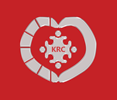Hormone therapy – Prostate cancer most commonly develops in men over the age of 50. It is a relatively slow-growing tumor and the most frequently diagnosed cancer among men.
For advanced prostate cancer, hormone therapy is considered the gold standard of treatment.
Prostate cancer is most often an adenocarcinoma (glandular cancer) based on its tissue structure. Prostate tissue grows under the influence of male hormones — androgens, which is why prostate cancer belongs to the group of hormone-dependent tumors.
However, it always contains some hormone-resistant cells (cells that continue to survive despite castration). After castration, all prostate cancers eventually become hormone-resistant. The tumor becomes hormone-refractory, meaning it no longer responds to hormone therapy and continues to grow despite androgen suppression.
Hormone therapy, in simpler terms, involves blocking testosterone — the “fuel” for the tumor — in the body. This can be achieved either medically (using estrogens or LH-RH analogues) or surgically (via orchiectomy, or removal of the testicles).
As explained above, hormone therapy is aimed at maximally eliminating androgens from the male body. The primary source of androgens is the testes, though a small amount is also produced by the adrenal glands.
To neutralize their effect on prostate tissue, additional anti-androgens are used. These drugs block the stimulating effect of androgens on prostate cancer cells.
This combination (hormone therapy + anti-androgens) is referred to as Maximum Androgen Blockade (MAB).
Examples of Gonadotropin-Releasing Hormone (GnRH) agonists include: Goserelin, Leuprolide, Decapeptyl, Diphereline, etc. These are available in 1-month and 3-month depot formulations. After the first injection, testosterone metabolism initially increases, which may temporarily worsen bone pain in metastatic sites or cause urinary retention.
To prevent this so-called “flare-up” effect, it is recommended that patients begin anti-androgen treatment 5–7 days prior to initiating LH-RH analogue therapy.
Hormone therapy can have several side effects, including:
- Lipid metabolism disorders
- Myocardial infarction (heart attack)
- Stroke
- Increased risk of type 2 diabetes
- Osteoporosis (which can lead to pathological fractures)
At the Karazanashvili Robotic Center, patients can undergo a full course of hormone therapy and chemotherapy for any oncological diagnosis.







